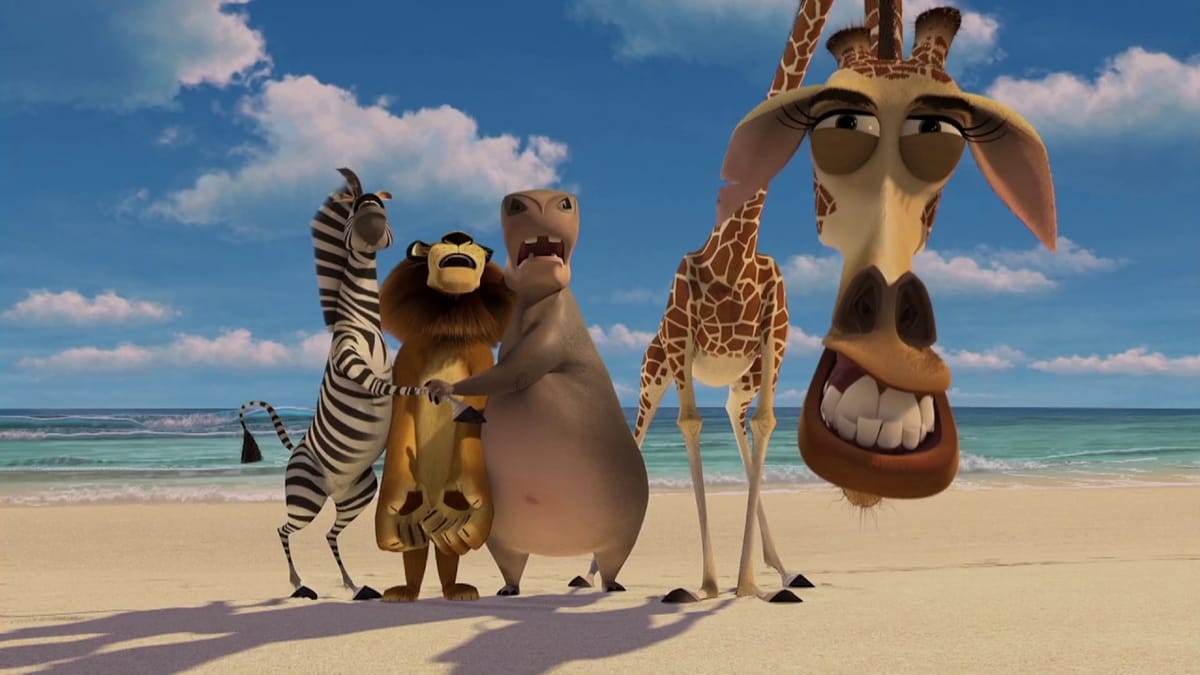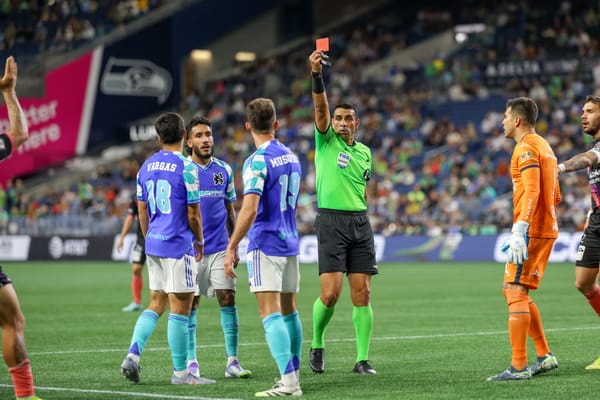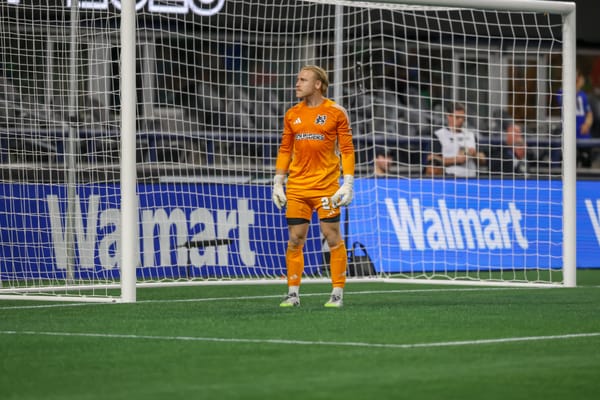San Diego FC-Portland Timbers Preview (8/23)

It isn’t everyday that a new expansion team comes into MLS, but San Diego FC’s entry into America’s top tier is noticeable for one specific reason. I’ll get to that later, but they’re making the most of their opportunity in their inaugural season. At the end of August, it’s Portland’s turn to tackle the (likely) best expansion team in MLS history.
The San Diego Report
Every time San Diego FC is mentioned somewhere, a reminder has to be issued about what had to die for them to live.
It’s way too easy to simply say that SDFC killed the Loyal. For four seasons, the Loyal existed in the USL Championship and weren’t very good. That’s OK, they didn’t have to be good. San Diego is a city starved of professional sports teams. The NBA’s San Diego Rockets existed for five years before moving to Houston in a move that’s the complete inverse of the Jazz’s relocation from New Orleans to Utah. San Diego doesn’t have rockets, Houston does, while Salt Lake City is the least “jazzy” major metropolitan area in the country. Most notably, the Chargers left in 2016 and landed in Los Angeles. Prior to SDFC’s arrival, the Padres were the only team who represented California’s forgotten third city. But the Loyal (along with the AHL’s San Diego Gulls and the briefly-active San Diego Fleet (part of new Trail Blazers owner Tom Dundon’s sicko spring football league known as the AAF, Yeetus Fleetus forever)) were second-tier options for a hungry city. The Loyal did have a, well, loyal fanbase who were extremely disappointed when a new group made a record expansion bid of $500 MILLION to bring a MLS team to San Diego. Rather than partnering with the Loyal and continuing the short but strong legacy of a good brand with a great color scheme, a tombstone now sits in its place.
There are many ways to describe this badge, and the designers did a pretty good job of trying to articulate why this monstrosity actually made sense in their minds.
This is a lot of nonsense, and it may as well have been written by ChatGPT. But it does serve a purpose: where else could I have gotten an explanation for why the crest has “San Diego” on it? So I’ll take a page out of the book created by these very helpful designers and describe what this badge actually looks like.
A tombstone. A police badge. Corporate minimalism. A butthole. Upon further inspection, the “G” in “Diego” looks like a “C.” San Dieco? The car company that this design should have gone to instead. The shield that “represents the strength and unity of our people” for driving two-and-a-half hours to go watch their football team during select weekends in the fall. A boring, offensive, and uncreative color scheme that represents all the life taken away from the Loyal. I’m not a sports business expert, but something could have probably been done to keep the Loyal’s color scheme and logo. Due to the sheer awfulness of this branding, San Diego’s nickname was born instantly upon release: Los Plasticos.
Maybe this is being too mean towards a city who did deserve a MLS team. I don’t think they deserved this one, but I don’t think they’ll mind the jab at all.
It was very easy to put San Diego at the bottom of the Western Conference for the preseason predictions. Sure, they’d made some noise in the international transfer market by signing Hirving Lozano, but a collection of youth and MLS inexperience foretold some bad times for the expansion team. If we’re looking at the most successful expansion clubs in Year One during recent history, a key MLS veteran (or two) is the most important thing to have aside from impact Designated Players. Atlanta had Miguel Almiron, Josef Martinez, Jeff Laurentowicz and Michael Parkhurst in 2017. Carlos Vela, Benny Feilhaber, and Walker Zimmerman were key to LAFC’s 2018. Walker Zimmerman, Dax McCarty, and Hany Mukhtar ushered in Nashville’s inaugural season in 2020.
But San Diego’s 2025 can really only be matched by St. Louis’ 2023 with only one MAJOR (this is an important distinction) contributor in Year One being classified as a MLS veteran (Tim Parker and Anibal Godoy, respectively). And, somehow, those two teams are rewriting the expansion record books.
Los Plasticos have been able to succeed in Year One for the same reasons as St. Louis: excellent coaching and a clear tactical identity. The Raviolis pressed the living hell out of their opponents, and made a habit out of capitalizing on mistakes committed from said press. That style of play, while very effective, wasn’t sustainable. So the Raviolis ended Year One with an unfortunate first-round playoff exit at the hands of their biggest rivals. But San Diego’s (16-4-7, 52 points, 1W/1S) approach has been sustainable in every sense of the word.
Head coach Mikey Varas wanted to become the best possession team in the league. So far, they’ve done exactly that. They have found the balance between being indirect and direct. Some teams like LAFC want to be direct 100% of the time, while Columbus prefers to be patient and use intricate combinations to unlock tight defenses. San Diego can do both, in equal measure. That’s because their squad is balanced and they have a MVP candidate on the right wing.
Contrary to initial reasoning, Lozano didn’t become San Diego’s best player. That honor is reserved for their other DP; Anders Dreyer. As the MVP race enters the final stretch, Dreyer is ahead of Lionel Messi, Evander, and Martin Ojeda (the four other candidates at this point) with 28 total goal contributions (13g/15a in 27 games). The former Anderlecht man is far and away the Newcomer of the Year, and could add a second trophy to his personal haul by year’s end. Lozano hasn’t been bad (8g/6a in 21 games) but Dreyer is a force of nature. Varas has built his system around a 4-3-3 with a single defensive midfielder and a back four that features flying wingbacks and tons of positional switches. Midfielder Onni Valakari is the poster child of this system; having played winger, striker, and CM during the season and excelling in every role. Jeppe Tverskov is the lone 6, and is the best tempo-setter in the league. He’s not a stranger to crashing the box either. Luca de la Torre is on loan from Celta Vigo, and is a San Diego native who has taken full advantage of his opportunity to play for his hometown club. This club is anchored by the star power of Tverskov, Dreyer, Lozano, and de la Torre, but their real strength is depth. Varas has relied heavily on a strong Supplemental Roster and contributions from the entire squad to succeed this season.
And they’ve absolutely succeeded. Here’s a nutty stat: San Diego only has two instances this year where they’ve lost consecutive games. The first was a 3-match run in April (Colorado away, Charlotte away, and RSL home). The other one shouldn’t even count because it was in Leagues Cup (Pachuca and Tigres). Since that RSL loss, Los Plasticos have only lost THREE MLS games (Seattle away, Houston home, and Toronto home). Their record in that span is 12-2-3! In their last 5 league games, they’ve conceded a total of 3 goals. This season began with the onus to score two more than the opponent, but their strong defense has been the hallmark of their recent run. Meanwhile, some of their recent results have been a little misleading. They’ve simply done an unreal job of punishing their opponents’ mistakes. Against the Timbers, they’ll likely be leaning on that tendency again.
SDFC Injury Report & Projected Starting XI
Kumado began the year as the starting right back, and Harangi took the position when the former got hurt. Now Harangi is hurt, and so is third-stringer Oscar Verhoeven. Ingvartsen registered a goal and an assist in last week’s comeback victory in San Jose.
This is what their best available XI looks like on paper. Negri was outstanding against San Jose after replacing the injured Harangi. McNair (the former West Brom loanee) was the best center back on paper at the start of the season, but has been frequently absent due to injury. I expect him to make his first start since July 12th. McVey has been an excellent addition and has actually been San Diego’s best center back. Bombino is on loan from LAFC, but his buy option will certainly be triggered after an excellent season. The midfield picks itself. Anibal Godoy could be in from the opening whistle, but his legs need to be saved for the postseason. Lozano featured two weeks ago but missed last week’s game. He’s back and should be in the starting lineup. Angel has been disappointing, which leads to a question of why loanee Milan Iloski (10 goals in 16 games) wasn’t kept around for the remainder of the campaign and was allowed to return to FC Nordsjelland (who promptly sold him to Philadelphia). Corey Baird and Amahl Pellegrino were brought in during the summer window to add depth to the striker position. Dreyer is a locked-in starter on the right, but keep an eye out for David Vazquez. The Philadelphia loanee has played some major minutes for Los Plasticos since arriving at the end of July. This is a very strong team that can win in a multitude of different ways.
The Timbers Report
The Timbers (10-7-9, 37 points, 6W/16S) treaded water throughout the entire summer. With only 1 DP available and a long period without Antony, the goals dried up and the sinking started after Leagues Cup ended. For the second time in their last 6 MLS matches, Portland has lost consecutive games. Since the beginning of June, Portland is 3-2-5. Now that the team’s “water-treading” period is over with the arrival of Kristoffer Velde, Felipe Carballo, and Matias Rojas, I think it’s time to look at how the rest of the season could shake out.
Reassessing Expectations
Velde, Carballo, and Rojas (referred to as the Summer Three for brevity hereafter) will have seven games to make their mark on the season. And it’s during the most difficult part of the schedule too! Fun! The road games are ridiculously hard, and it makes every home game a must-win. Luckily, their easier games are at home. But that hasn’t proven to be a good omen for the 2025 Timbers. So with this fixture list in mind, what do the remaining expectations for the season look like?
At the start of May, the Timbers were on a 7-game winning streak and occupied 2nd place in the West with a 5-point gap between them and the final Wild Card spot. May was not an easy month filled with tons of games and a lot of dropped points. But they were in 4th place when the calendar turned to June, so the expectations remained similar to the start of May: finish in the top four.
Taking the summer into account, and the arrival of the Summer Three, and the severity of this upcoming schedule, it becomes clear that “top four” is not the realistic expectation to have. So here is the official Expectations Reset (trademark) for the last seven games of the regular season:
Top Four: Overachievement
5th-7th: Bare Minimum Expectation
8th-9th: Disappointment, But Not Catastrophic
No Playoffs: Catastrophic
The other aspect is the manner in how the team finishes. Due to the sheer amount of “games in hand” collected by teams above and below them, the Timbers could still put up a really strong end to the regular season and miss out on their goals. Getting into the top four would require some slip ups, but the Timbers could deliver those slips because they play San Diego twice, Minnesota away, Vancouver away, and Seattle away during this final sprint. This makes each of these games six-pointers. The first one is tomorrow. So how will they tackle it?
PTFC Injury Report & Projected Starting XI
Rodriguez is continuing his rehab, and looks to be progressing well. Miller’s addition is a bit of a surprise at this stage of the season.
Are the Timbers truly back to the 4-2-3-1? I believe so. Zuparic replaces the injured Miller, while Crepeau gets another start. Would I be surprised to see Pantemis in goal? No, but I think it’s Crepeau’s job for another week. This lineup becomes very hard to predict (aside from Da Costa and Antony) after the defense is selected. Could Velde start? It appears that he has gotten his visa, and the other two members of the Summer Three are also cleared for minutes. At the very least, Velde sees the field, but I’m not entirely confident in labeling him as a starter. Either way, he’s a DP and he has to play regardless. Carballo is the most likely member of the Summer Three to start tomorrow’s game, and it could be alongside David Ayala or Chara. My gut says Ayala, but Chara’s absence from the Cincinnati game leads me to believe that he was being prepared for this game in particular. Personally, I would go with Ayala and let Chara start in Minnesota next week, but my job is to predict what the coaches will do. Kelsy keeps his spot after a brace against Cincy and Phil Neville’s tendency to start him on the road.
The bigger question might be “Who makes the trip?” With Portland’s senior roster now completely full, some players will have to miss out. With no inside info, here’s my pick for Portland’s 9-man bench:
Pantemis/Crepeau (whichever one doesn’t start)
Ian Smith
Eric Miller
David Ayala
Cristhian Paredes
Omir Fernandez
Ariel Lassiter
Matias Rojas
Felipe Mora
Smith and Miller’s ability to cover center back (Fory also counts) makes McGraw relatively expendable for this trip. Ortiz misses out due to Paredes’ supersub capabilities. For the record, I do not have intimate knowledge of who did or didn’t make the trip. But I thought this would be an interesting exercise given the strength of the roster at the current moment.
Tactical Preview
Playing To Their Strengths?
Speaking of strengths, this match should be fascinating from a tactical point of view. Not in terms of the many rotations and runs San Diego will be making, but how well Portland will absorb pressure and counterattack into space. Los Plasticos do have a serious weakness: transition defending. Because both of their fullbacks often get forward to join the attack, gaps can form in the backline and be easily exploited during counterattacks (sound familiar?).
Portland’s urgency during counterattacks is the biggest difference between the beginning of the season and the present day. For this game in particular, they have to take advantage of every turnover and immediately look to punish San Diego in transition. With ample depth in the attacking areas, players should be blazing out of the starting gates when an opportunity arises. That’s what it takes to beat these types of teams. Do I think that the Timbers will try to absorb pressure to the fullest extent like Minnesota? No, but I think their most dangerous opportunities will come during transitions. Unless the new additions provide a serious and instant spark, which I’m not counting on.
This is the game to fully unleash the speed. Take on defenders, make long runs, and let the ball do most of the work.
Doing the Basics
Los Plasticos are incredible punishers. Against San Jose, they were down 1-0 in the 81st minute before two mistakes allowed them to score twice. They are relentless and never give up throughout the entire 90 minutes of game time. Portland simply has to do the basics in order to stand a chance of winning. No, doing the basics by themselves will not hand the Timbers a victory. They need a solid platform (and plenty of off-ball runs) to attack with, and they need to keep their shape against the ball.
Finn Surman is a player to watch in this game as Juan Mosquera’s numerous journeys forward will undoubtedly open up space for Lozano. One month ago, he shut down Denis Bouanga. This is another big game for him against one of MLS’ top wingers. I’m less concerned about the Fory-Dreyer battle, but the tricky Dane will always have someone in support to help if he gets cornered. Paying attention to every bit of movement on and off the ball will be a huge test of this team’s playoff mettle. In order to pass this test, they cannot beat themselves.
Matchday Info
Announcer Analytics
English: Neil Sika & Lloyd Sam
Spanish: Erasmo Provenza & Natalia Astrain
Home radio broadcast from 750 The Game: not available on Apple TV
Broadcast platform: MLS Season Pass on Apple TV
Kickoff time: 7:30 PM PST
Referee Report
Rosendo Mendoza’s 2025 stats: 17 games, 28.18 fouls/game, 0.35 penalties/game, 4.94 yellows/game, 0.29 reds/game
Last Timbers game officiated: June 28, 2025 @TOR 3-0 L
Series History
First meeting! How fun!
Table Time
Earlier I discussed the long-term expectations for the rest of the season, but it’s time to get into the immediate future. All of the teams above Portland will play non-playoff teams this weekend. Ditto for the two teams directly below them. This is a week where the Timbers need to win in order to keep treading water table-wise. A loss could see them drop to 8th, and there’s no way for them to rise higher than 6th. Although ending the weekend in 8th could be bad for optics, it isn’t concerning in the long run. But it is absolutely imperative that the Timbers take something from this game.
Final Whistle
This will be like a playoff game, which matches the level of competition from last weekend’s game. However, the Timbers won their last road game against a fellow playoff team when they held LAFC in check in late July. The problem? That was their only road win since April.
Portland has shown a frustrating tendency to play to the level of their opponents. This has led to some impressive wins (LAFC away, Colorado away) but some disastrous results as well (San Jose away, Toronto away, RSL home). They could carry some momentum from the second half against Cincinnati, but it’s unrealistic to expect them to do so.
Momentum and energy could be provided by a large amount of traveling Portland fans. Quick note to those who have traveled: San Diego fans are quickly getting a reputation for being belligerent. Two notable fights have broken out (LAFC and LA Galaxy) when San Diego fans have attacked traveling supporters. Be safe, be on your guard, and don’t pay attention to them.
Is this a game that the Timbers need to win? I don’t think so, but it is a game that they absolutely could win. San Diego has spent the last couple of weeks since Leagues Cup toying with disaster but ultimately facing zero consequences for it. A win tomorrow would be huge for morale and the playoff race. Simply put: go out there and raise your level. The climb continues.




